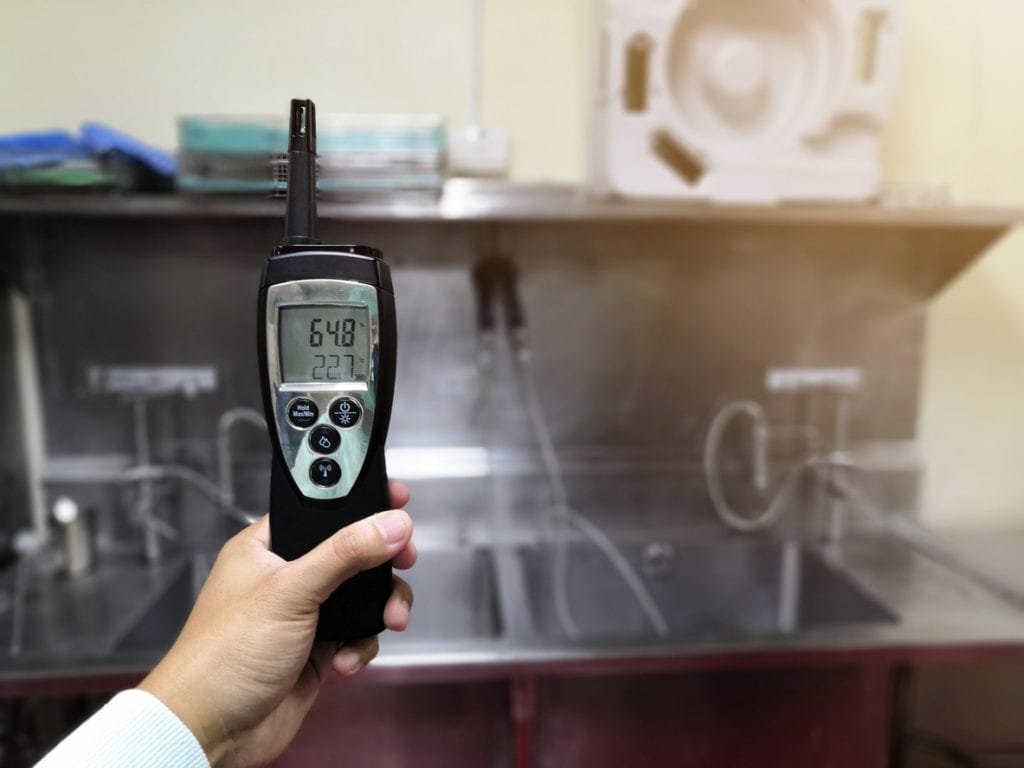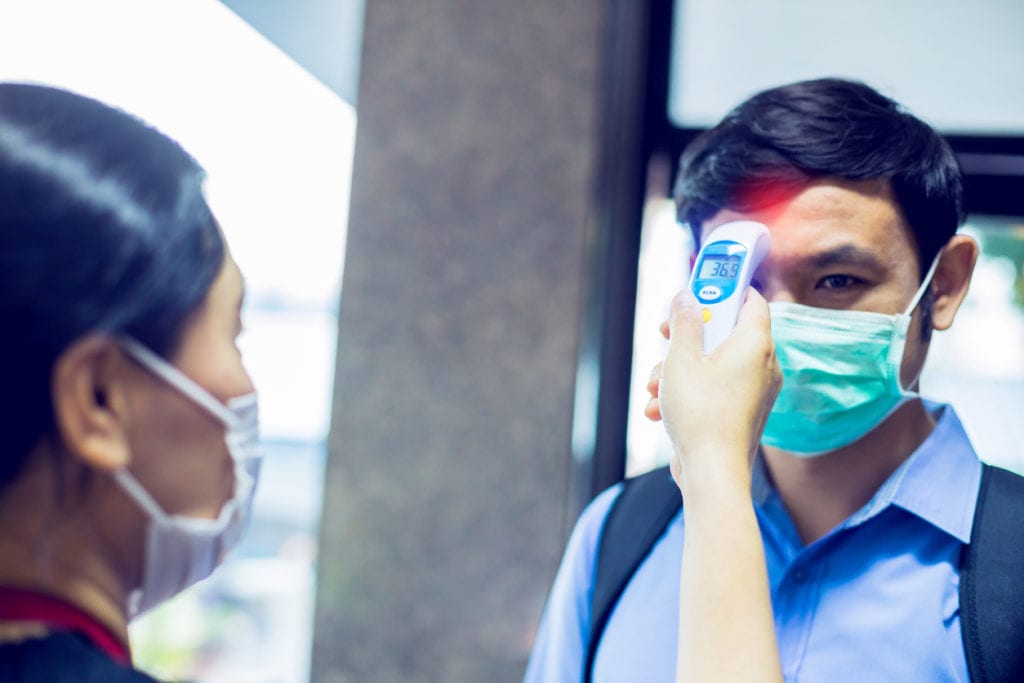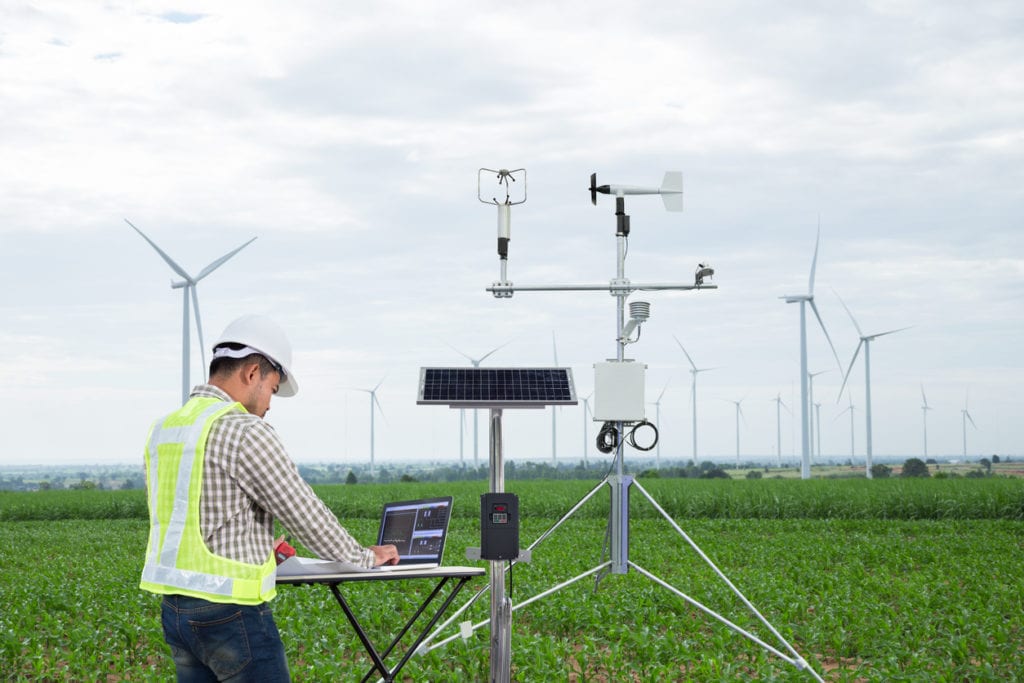More information on Temperature and Humidity >
As the UK’s National Metrology Institute, NPL realises and disseminates the UK National Standards for temperature (between approximately -196 °C and 3000 °C) and humidity (dew-point temperatures from -90 °C to +95 °C), the uncertainties of which are confirmed through international comparisons.
Accurate and reliable temperature and humidity measurements are critical to industry, meteorology and research. Businesses and organisations need to have complete confidence in the performance of their measurements over a wide range of temperatures and even in the harshest conditions. The experienced team at NPL conducts cutting-edge research into the development of innovative temperature and humidity measurement techniques. NPL also works as part of several projects with applications across various fields including life science and health, manufacturing and energy & environment.
In 2018, at the 16th General Conference of Weights and Measures, it was agreed that the international system of units would be redefined in terms of defined values of fundamental constants. Since May 2019, the kelvin has been defined by taking a fixed numerical value of the Boltzmann constant. This change in definition acknowledges that temperature is fundamentally a measure of the average energy of atomic or molecular motion.

To facilitate the effective redefinition, it was essential that the required primary thermometry methods were in place. Through the development of reliable primary thermometry at the extremes of temperature (<25 K and >1300 K) it is envisaged that by the mid-2020s the current temperature scales, in those ranges, (ITS-90 and PLTS-2000) may be superseded by primary thermometry for calibration and traceability purposes.
This work took place as part of an EMPIR project with the overall objective of optimising the primary thermometry capability within the EU, whilst allowing partners to specialise in particular areas of primary thermometry. NPL has focused on primary acoustic thermometry and indirect primary radiometry mediated by novel high temperature fixed points.
The kelvin redefinition was a once in a lifetime opportunity to fundamentally change the principles and practice of thermometry. This research involved the international primary thermometry community, with input from many of the world-leading NMIs and institutes.
The Covid-19 pandemic has brought into the spotlight how unreliable body temperature measurement can be in health services and more generally around the world. There are many challenges with using infrared thermometry in public health settings. Forehead thermometers are widely used but there is no effective standardisation for body temperature measurement and thermometers are often misused, for example too far away from subject, or not moving obscuring hair from the line of sight. Thermal imaging has also been used for fever screening but unless performed under carefully controlled conditions, it faces the same challenges as forehead thermometry.

A new global task group led from the Consultative Committee of Thermometry and including representatives from NPL, the National Institute of Metrology, China, Centro Espanol de Metrologia, Spain, University of Ljubljana, Slovenia and NMC, A-Star, Singapore, aims to improve body temperature measurement, primarily by infra-red methods, on a global basis.
The task group is chaired by Professor Graham Machin, NPL, and is initially focussing on improving infra-red methods of body temperature measurement (ear, forehead, thermal imaging).
In addition there is a UK Body Temperature group focused on improving body temperature measurement and a paper detailing this work of the group is due for publication imminently.
There are at least 3.3 million people with diabetes in the UK. A proportion of those are at high risk of developing serious ulcers on their feet (Diabetic Foot Ulceration, DFU), which often take months to heal and can become infected, in which case, if not treated promptly, can lead to amputation. Besides the adverse effect on patients, it has been estimated that DFU and related complications currently cost the NHS more than £1 billion per year. Detection of potential ulcer sites on the foot is therefore critical for enabling doctors to intervene to protect the foot.
NPL’s world-leading expertise in thermal imaging measurement has led to a breakthrough medical imaging device, which generates temperature maps of patients’ feet, to provide early alerts of potential ulceration. Such early detection would give more than a week’s extra time to take preventative action, reducing or even eliminating the ulceration and associated risk of infection.
The research is the outcome of a £1.2 million project funded by the National Institute for Health Research (NIHR) Invention for Innovation (i4i) programme. Critically clinical trials were incorporated within the project to demonstrate the efficacy of the technique.
Blackbody radiation sources are routinely included in space borne EO (and some other) missions to provide a method of on-board instrument calibration.
Although the blackbodies can be used regularly and autonomously the cavity temperature must be measured reliably in order to use them. This on-board measurement is generally performed using resistance thermometers. Unfortunately, the calibration of the on-board resistance thermometers can easily be affected both by the extreme conditions encountered during the satellite launch and by the conditions in space, and hence they are not as reliable as necessary.
NPL has collaborated with RAL Space to investigate on board (that is in-situ) calibration options for the resistance thermometers, through using a very small ingot of gallium to provide a known and reliable reference temperature. This would then provide an in-situ calibration of the resistance thermometers that is traceable to the temperature scale in use around the world, the ITS-90.
NPL were able to show that the miniature ingot can be used in this situation, with as little as 0.5 g of metal, and that it is suitable for possible inclusion in a flight mission.
With this new technology in place, it is expected that there will be significant improvements in the accuracy, stability and traceability of temperature measurements in the space sector, which will in turn underpin more reliable climate observations and studies.
Climate and weather affect a vast range of human endeavours, and their importance ranges from convenience and comfort to matters of life and death.
Meaningful climate studies depend critically on measurements, uncertainty of these measurements, and correct interpretation. Users of weather data increasingly need uncertainty information, so that they can assess weather-related risks. Humidity and temperature are key climate variables.

Despite long-term development of techniques, reliable weather-station observations of air temperature and humidity remain challenging. Thermometers and their screens are particularly affected by solar radiation, and relative humidity sensors can drift significantly in condensing conditions. In the upper atmosphere problems are exacerbated, as balloon-borne sensors additionally need fast response in low-density air. Non-contact temperature and humidity measurement methods offer the potential to address all these challenges.
NPL has worked on many humidity and temperature projects which are making a difference by providing measurement traceability for humidity and temperature observations in weather stations across the UK, addressing the challenge of measuring air temperature by quantifying temperature errors caused by solar radiation on thermometers and paving the way for sourcing weather data more widely by developing uncertainty analysis for temperature and humidity observations provided by third parties.
The measurement of temperatures above 1000 °C is both difficult and vital for the success of a wide range of industrial processes, including nuclear fuel production and essential nuclear safety testing. In the nuclear sector, measurements can be required up to 2500 °C and at more modest temperatures nuclear waste often needs long term, continual and reliable observation.
The harsh environment which is synonymous with the nuclear industry makes it difficult, if not in some cases impossible, to use traditional temperature sensors. Conventional sensors undergo mechanical, chemical and physical changes which cause calibration drift and hence error in measurement. In addition, because of the environment, sensor replacement is often not possible.
Using temperature sensors based on fundamental thermometry, like a Johnson noise thermometer, avoids this problem. The main development challenge is to extract the tiny Johnson noise signal from ambient electrical noise influences using compact electronics. NPL is working with an innovative SME (Metrosol) to develop a practical Johnson noise thermometer, which has now resulted in a working prototype which can measure temperature with an uncertainty of the order of ±1 °C in just a few seconds. Therefore, pending further performance hardening, these particularly harsh environments can potentially be monitored, while avoiding errors in measurement due to calibration drift.

Monitoring of the UK’s nuclear waste inventory can be improved by periodic non-contact temperature measurements of the waste containers, especially in store. Identification of ‘hot spots’ on container surfaces is important to detect surface changes (e.g. through corrosion or deformation) or the location of radioactive material near the container surface. Thermal imaging can remotely measure the surface temperature, provided the surface emissivity is known. This is often not the case; therefore, imaging phosphor thermometry can be used to determine the surface temperature at a number of key locations independently of the emissivity. By combining thermal and phosphor imaging, it is possible to reliably determine surface temperature.
Conventional electrical sensors, such as thermocouples and resistance thermometers, are degraded when exposed to gamma and particularly neutron radiation. Phosphor tipped fibre-optic (non-electrical) sensors have the potential to overcome these challenges. The temperature can be determined optically, where the phosphor is excited with light and the characteristics of its emission then used to determine the temperature. However, optical fibres degrade in the nuclear environment. To address this, hollow core (photonic) fibres are used, where the reduction in light transmission with radiation damage is significantly less than in traditional solid core fibres. Additionally, provided the fibre transmission remains constant during the measurement (for a duration of less than 1 s), the phosphor derived temperature is independent of fibre attenuation. These sensors can potentially be used to monitor nuclear storage containers and store conditions over an extended period of time, up to many years.
Temperature is one of the most frequently measured parameters in advanced manufacturing. Nearly all industrial production involves controlled heating and cooling. Reliable temperature measurement is essential to ensure consistent product quality, minimise waste product and optimise energy use. Poor temperature control leads to uneven product quality, a rise in scrappage rates and poor use of energy. The latter leads to increased greenhouse gas emissions. The list of industries requiring reliable thermometry is vast including aerospace, both in producing components for the engine (e.g. hot zone turbine blades), for the fuselage and running of the engines, semiconductor production and processing, wind turbine blade production (composite curing), all manner of materials joining (e.g. welding), forging and forming, reliable running of batteries and internal combustion engines for automotive use and many more traditional important industries such as iron, steel (and all other metals), glass, chemicals, food processing and pharmaceutical production.
NPL has been at the forefront of developing thermometry techniques for the benefit of industry, these have included low drift thermocouples and reliable surface and rapid thermometry. Many of these developments were through the European Metrology Programme for Research and Innovation (EMPIR) Enhancing process efficiency through improved temperature measurement projects (EMPRESS 1 & 2).
Currently all temperature sensors drift in service meaning periodic recalibration is essential. However, to make Industry 4.0 and autonomous production a reality (that is introduce production techniques without intervention of a human operator) requires the development of temperature traceability at the point of measurement. These next generation of sensors, for the 2030s and beyond, will need to be self-calibrating or even driftless primary sensors based on fundamental physics. NPL is at the forefront of these developments having already licenced self-validating technology to one company and developing practical primary thermometry with Metrolsol (see previous section).
NPL has leading expertise and novel techniques for solving real-world temperature and humidity measurement problems, including those in challenging or harsh environments. The NPL Temperature and Humidity team has leading expertise and continues to research and develop novel techniques in: contact thermometry, humidity and moisture measurement, primary thermometry, quantitative thermal imaging, non-contact thermometry and reliable harsh environment thermometry. These offer solutions to many real-world temperature and humidity measurement problems, including those in challenging or harsh environments, with the potential to address major global issues, such as the long-term impact of diabetes for patients’ quality of life and providing more accurate climate models that enable sound policy changes across the world.
More information on Temperature and Humidity >
